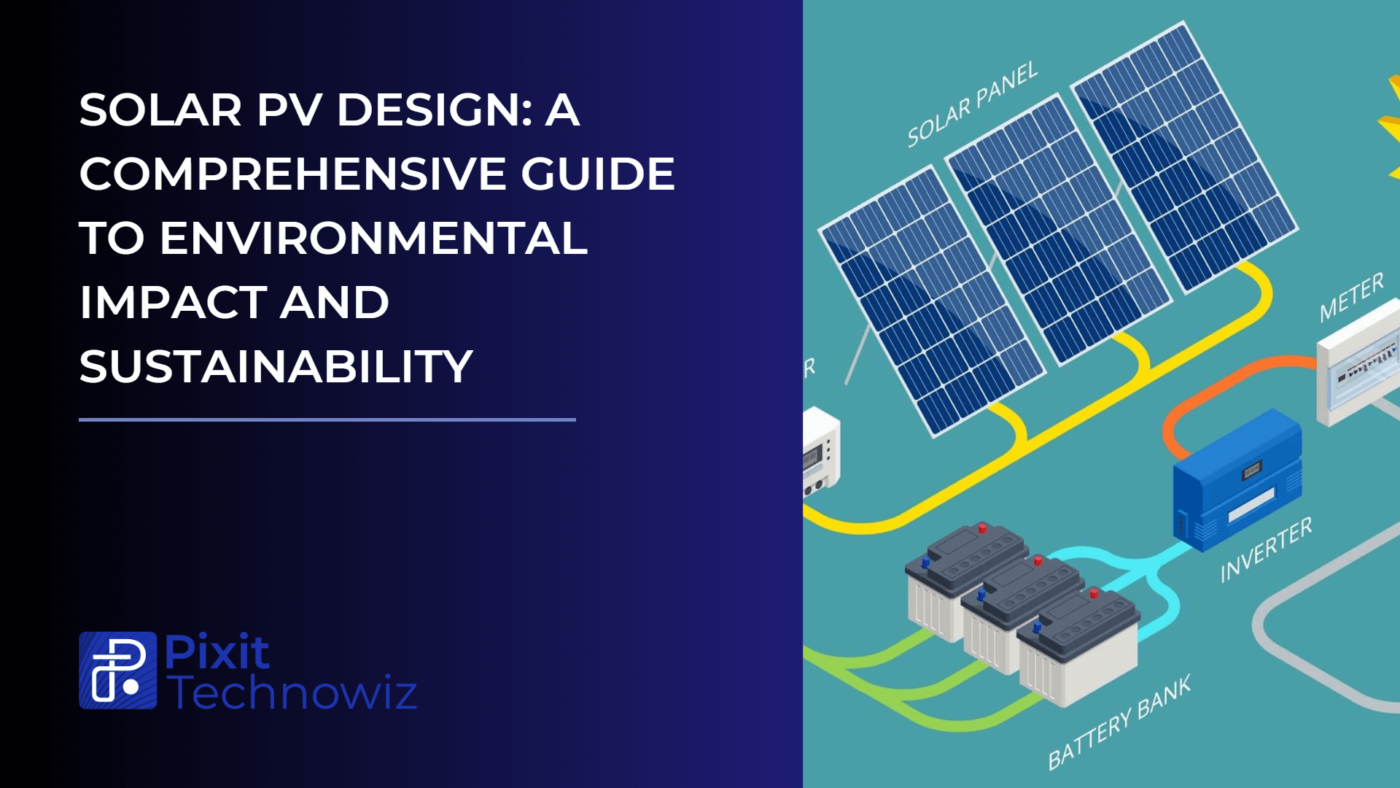Introduction
The rise in solar energy’s popularity is undisputed and is fueled by the urgency of transitioning to renewable and clean energy sources. When solar photovoltaic (PV) systems expand and become widespread, it is essential to assess their environmental impact throughout life. The idea behind solar PV layouts is essential to maximizing sustainability and minimizing negative impacts.
This blog post will comprehensively study solar PV’s design and its significance with environmental impacts and compare it with different renewable energy sources.
Solar Energy: A Sustainable Energy Solution
Solar energy plays a crucial role in reducing carbon emissions, which can reduce the negative consequences caused by climate change. This is where the Solar PV technology comes in. Solar PV systems help mitigate climate change by harnessing the sun’s power and then converting it to green energy. So, Solar PV Layouting is essential to maximizing your system’s sustainability by ensuring it is sustainable and environmentally friendly.
In comparison with other sources of renewable energy, solar energy offers distinct advantages in scale, access, and low environmental impact.
Life Cycle Assessment of Solar PV Systems and Design Considerations
Life Cycle Assessment (LCA) is a systematic assessment to determine the ecological impact of an item or system throughout its life.
The life cycle of solar PV systems includes the extraction of raw materials, production and manufacturing, transport and installation, maintenance and operation, and the management of end-of-life and recycling.
Each stage has design implications which affect the system’s global environmental impacts.
Raw Material Extraction and Solar PV Design
Solar panels comprise different materials, including silicon metals, glass, and a few other materials. Extracting raw materials could destroy habitats and cause resource depletion and pollution. Using solar PV design strategies like using alternative materials or increasing the efficiency of resource use as well as minimizing the environmental impact of extraction can reduce a lot.
Manufacturing, Production, and Solar PV Layouting
The manufacturing process for solar PV involves transforming raw materials into solar panels. The energy consumption and emissions generated during manufacturing can be significant and contribute to the system’s carbon footprint. The generation of waste and the management of the production of solar PV are essential elements to be considered when assessing the environmental impact.
Innovative solar PV designs, including simplified manufacturing processes or techniques to reduce waste, could help minimize the environmental impact.
Transportation, Installation, and Solar PV Design
The installation and transportation of PV solar systems are affected by variables such as the size of the panel, its weight, and its position. These stages of installation must be considered in terms of environmental impact. Include emissions from transport and the possibility of disruption to ecosystems during installation.
Best practices for solar PV layout, including optimizing panels’ size, or incorporating modular systems, will reduce the environmental impact of transportation and installation. Pixit Technowiz is a pioneer in providing accurate and efficient solar PV design and development services across the US.
Operation, Maintenance, and Solar PV Design Efficiency
Time to pay back energy and carbon footprint are critical indicators to evaluate the environmental sustainability of solar PV systems. Performance and efficiency are affected by the panel’s orientation shade, temperature, and orientation. The design of solar PV plays an essential role in ensuring the system’s sustainability through regular maintenance and maximizing efficiency.
Environmental risks that could arise during operations, including water consumption or hazardous material leakage, could be minimize through a well-thought-out design approach.
End-of-Life Management, Recycling, and Solar PV Design
The proper management of end-of-life is crucial to ensure the longevity of solar PV systems. Recycling solar panel components and panels is crucial to reduce waste and depletion. The latest recycling techniques continue to be improving, increasing the extraction of valuable materials.
Solar PV designs can impact recycling efficiency by using easy-to-dissembling components or recyclable materials.
Future Trends and Innovations in Solar PV Design and Sustainability
It is clear that the solar sector is constantly changing. Recent advances in solar panel materials and PV design techniques are capable to improve efficiency while reducing environmental impact. Circular economy strategies focusing on durability, modularity, and recyclability are gaining momentum in solar PV layouts and systems and contributing to overall sustainability. Regulations and policies play an essential role in encouraging environmentally sustainable methods in the solar power industry by encouraging the development of environmentally sustainable designs and innovations.
Conclusion
The impact on the environment that solar PV installations have on the environment is a crucial factor throughout their entire life cycle, and solar PV design is a critical factor in minimizing adverse effects. The possibility of continuous advancement in solar PV sustainability is attainable through design innovation, technological advances, technological advancements, and circular economic principles. Thus, consumers and industry professionals must consider the impact on the environment and solar PV layout when choosing solar energy options to guarantee sustainability over the long term.
For more information or a consult on the design of sustainable solar PV, please consult with our in-house experts. We can hire you for 9$ an hour.

